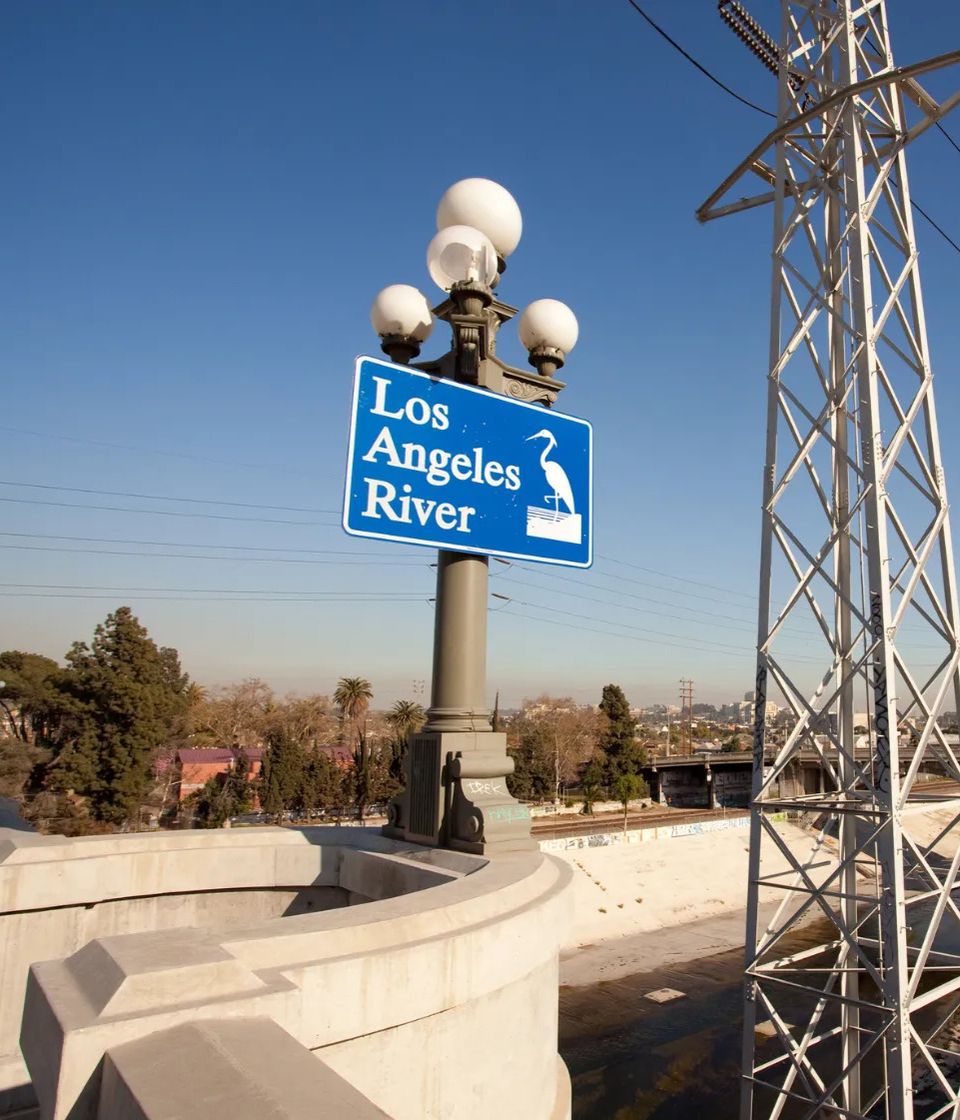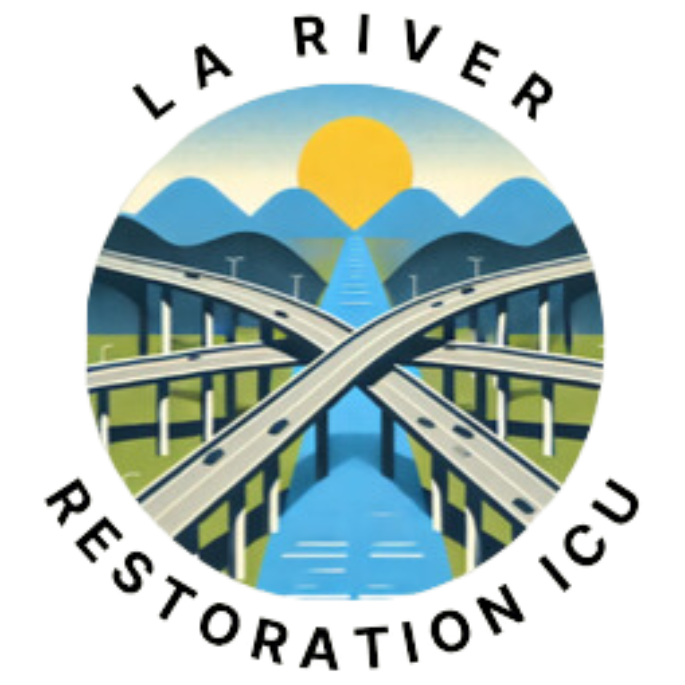


Welcome to LA River Restoration ICU
The Los Angeles River is at a critical crossroads between the legacy of concrete confinement and the possibility of a thriving, resilient waterway that benefits both nature and community. Restoration isn’t just an option: it’s an urgent necessity.
LARiver.Restoration.ICU champions the urgency of restoring the LA River by showcasing real progress through images, videos, and storytelling. We connect people with ongoing restoration efforts, highlight successes and challenges, and advocate for long-term solutions that strengthen Southern California’s ecological and social fabric.
Our mission is simple: show restoration, promote its importance, and inspire more people to care, contribute, and take action. Through partnerships with local organizations, educators, and advocates, we aim to amplify the collective work being done, while drawing in new voices -- from students and teachers to policymakers and curious neighbors.
As Los Angeles prepares for the global spotlight of the World Cup (2026) and Olympics (2028), the Los Angeles River is a symbol of what’s possible when a city commits to healing its natural spaces. Now is the time to push forward and show progress. The world is watching.
LARiver.Restoration.ICU champions the urgency of restoring the LA River by showcasing real progress through images, videos, and storytelling. We connect people with ongoing restoration efforts, highlight successes and challenges, and advocate for long-term solutions that strengthen Southern California’s ecological and social fabric.
Our mission is simple: show restoration, promote its importance, and inspire more people to care, contribute, and take action. Through partnerships with local organizations, educators, and advocates, we aim to amplify the collective work being done, while drawing in new voices -- from students and teachers to policymakers and curious neighbors.
As Los Angeles prepares for the global spotlight of the World Cup (2026) and Olympics (2028), the Los Angeles River is a symbol of what’s possible when a city commits to healing its natural spaces. Now is the time to push forward and show progress. The world is watching.
The Los Angeles River Watershed
The Los Angeles River Watershed spans 834 square miles, reaching from the Santa Monica Mountains and Simi Hills in the east to the Santa Susana Mountains and San Gabriel Mountains in the west. At its core lies the Los Angeles River, a waterway that has long shaped the region’s landscapes and communities. Beginning in the mountains, the river flows east toward Griffith Park before turning south through the Glendale Narrows, ultimately meeting the Pacific at San Pedro Bay near Long Beach.
For centuries, the river served as a life source for Indigenous peoples and early settlers. But as Los Angeles grew, so did the river’s challenges. Seasonal floods, especially the catastrophic 1938 flood, led to the construction of an extensive flood control system. Beginning in 1938, the U.S. Army Corps of Engineers launched a massive channelization project, encasing over 51 miles of the river in concrete. The project, which spanned more than two decades, effectively controlled flood risks but severed the river from its natural ecosystem, stripping it of its meandering paths and wetlands. What was once a thriving waterway became a fast-moving channel, pushing urban runoff and pollutants straight into the ocean.
Today, a new chapter is unfolding.
Restoration efforts are working to rewild the river, reconnect communities, and repair decades of environmental damage. These initiatives aim to balance essential flood control with the urgent need to restore habitats, improve water quality, and create public spaces that serve both people and wildlife.
Key focus areas include:
The Los Angeles River is more than a flood channel: it’s a living system with the potential to thrive once again. With continued collaboration between city agencies, environmental advocates, and local communities, the LA River can be reimagined as a vibrant urban ecosystem, one that supports biodiversity, strengthens climate resilience, and reconnects Angelenos to their river.
For centuries, the river served as a life source for Indigenous peoples and early settlers. But as Los Angeles grew, so did the river’s challenges. Seasonal floods, especially the catastrophic 1938 flood, led to the construction of an extensive flood control system. Beginning in 1938, the U.S. Army Corps of Engineers launched a massive channelization project, encasing over 51 miles of the river in concrete. The project, which spanned more than two decades, effectively controlled flood risks but severed the river from its natural ecosystem, stripping it of its meandering paths and wetlands. What was once a thriving waterway became a fast-moving channel, pushing urban runoff and pollutants straight into the ocean.
Today, a new chapter is unfolding.
Restoration efforts are working to rewild the river, reconnect communities, and repair decades of environmental damage. These initiatives aim to balance essential flood control with the urgent need to restore habitats, improve water quality, and create public spaces that serve both people and wildlife.
Key focus areas include:
- Groundwater Revitalization: Projects now prioritize slowing stormwater flows to allow water to seep into local aquifers, strengthening the region’s groundwater reserves, a critical need in drought-prone Southern California.
- Pollution Mitigation: Green infrastructure, like bioswales, wetlands, and trash-capture systems, helps filter urban runoff, preventing harmful pollutants from reaching the river and the ocean.
- Habitat Restoration: Rewilding efforts are bringing native plants and wildlife back to the river’s edge, creating vital corridors for species like the endangered Southern California steelhead trout.
- Public Access & Community Spaces: New parks, trails, and greenways are transforming once-inaccessible stretches of the river into community hubs for recreation, education, and cultural events.
The Los Angeles River is more than a flood channel: it’s a living system with the potential to thrive once again. With continued collaboration between city agencies, environmental advocates, and local communities, the LA River can be reimagined as a vibrant urban ecosystem, one that supports biodiversity, strengthens climate resilience, and reconnects Angelenos to their river.


Why the LA River Matters
-
Ecosystem Revival: Native plants, wetlands, and wildlife corridors.
-
Climate Resilience: Enhanced flood control, improved water quality, and urban cooling.
-
Public Access & Recreation: Parks, bike trails, and cultural spaces along the river.
-
Cultural & Economic Impact: Community revitalization, job creation, and sustainable tourism.
- A Legacy for Future Generations: A thriving, living river for LA’s people and wildlife.
How You Can Help
- Volunteer: Join cleanups, restoration projects, and community events.
- Advocate: Support policies that protect and restore the river.
- Donate: Help fund grassroots restoration and conservation efforts.
-
Engage with Key Organizations:
- Local LA-Based Groups:
- National/Regional Environmental & Policy Groups:

